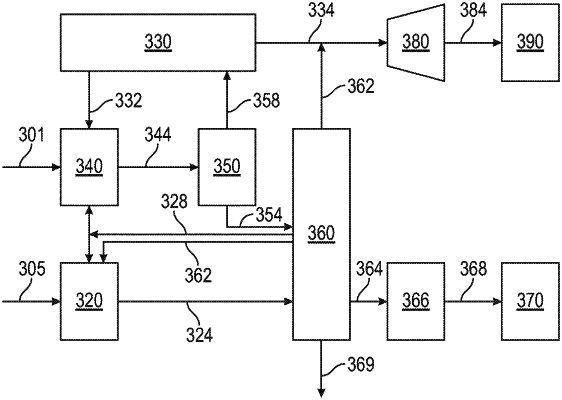| CPC C10G 1/10 (2013.01) [C10B 49/22 (2013.01); C10B 53/07 (2013.01); C10G 9/36 (2013.01)] | 22 Claims |

|
1. A method for pyrolyzing a mixed polyolefin feed, comprising:
exposing a feedstock comprising a mixture of polyolefins comprising two or more types of monomers to polyolefin pyrolysis conditions to form a pyrolysis effluent, the polyolefin pyrolysis conditions comprising:
heating the feedstock at a rate of 100° C. per second or more to form a heated reaction mixture having a temperature of 500° C. to 900° C., and
cooling the heated reaction mixture to a temperature of less than 500° C. to form the pyrolysis effluent, the heated reaction mixture being at a temperature of 500° C. or more for 0.1 seconds to 5.0 seconds;
performing an initial separation on the pyrolysis effluent to form at least a pyrolysis product fraction and a fraction comprising solid particles;
performing steam cracking on a steam cracker feed to form a steam cracker reactor effluent;
passing at least a portion of the steam cracker reactor effluent into a primary fractionator to form at least a first fractionator product and one or more additional fractionator products having a higher boiling range than the first fractionator product;
passing at least a portion of the first fractionator product and at least a portion of the pyrolysis product fraction into a process gas compressor to form a compressed olefin product fraction, a volume of the pyrolysis product fraction comprising 0.1 vol % to 20 vol % of a combined volume of the at least a portion of the first fractionator product and the pyrolysis product fraction; and
separating at least a first product stream comprising ethylene and a second product stream comprising propylene from the compressed olefin product fraction.
|